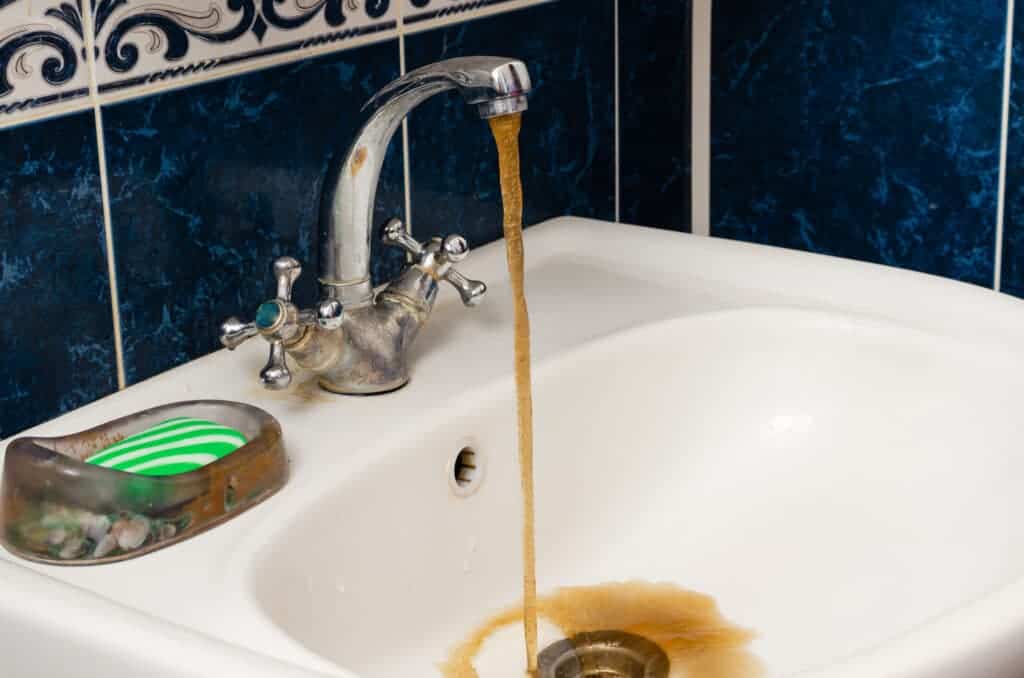There are many possible sources of well water contamination, some obvious and others subtle. When homeowners begin the task of tracking down the source of well contamination, they will often begin with these steps:
- First, examine the well cap to ensure the well is sealed at the top to keep out bacteria sources.
- Next, they may have a well inspector come out and ensure that the casing and pump are in good condition.
- They could test the water itself to determine if toxins are seeping in from nearby mineral deposits or industrial or agricultural sites.
However, all these efforts could miss the mark.
There are three more hazards that can cause serious well water contamination. These are often missed because they may be completely invisible. That’s because all three are underground.
Well Water Contamination from Abandoned Wells
An uncapped, unclosed water well that is no longer used acts as a direct conduit between surface water and the underlying aquifer. Oil, salt, fertilizers, herbicides, pesticides, agricultural waste and more can be introduced to the aquifer through this opening. Any wells nearby can then be contaminated with these substances.
In North Dakota, there are an estimated 100,000 abandoned wells. In Texas, 150,000. Michigan estimates more than two million abandoned wells!
It can be difficult to find old wells if there is no well cap, well house or other structure to point out its location. Old county or state records may indicate their locations. Senior citizens still in the area may also know where they were dug.
It is the responsibility of the property owner to properly plug an abandoned well. This job must be done by a professional company because the procedure to plug the well depends on the geology of the area and the well type.
Well Water Contamination from Septic Systems
Any septic system owner knows that their septic tank must be pumped out every few years. A typical septic system will last for 30 years, if installed properly. But when the time comes to replace it, the old tank must be properly decommissioned to prevent contamination of nearby water wells.
If not properly decommissioned, an unused septic system can spread tetanus, hepatitis A, leptospirosis, cholera, dysentery, and gastrointestinal disease to the household water source.
The decommissioning process will include pumping out any remaining waste matter, disinfecting the tank (depending on the community laws) and crushing or breaking up the tank while making holes in the bottom for water to leak out. The tank is then covered with soil. This is the only way to eliminate any contamination from this source.
Well Water Contamination from Abandoned Cesspools
The New York Times reports that there are as many as half a million cesspools on Long Island alone. Neighborhoods built before 1970 and before sewer lines were installed often provided a cesspool for each home. When the homes were connected to the sewer lines, the cesspools were abandoned. Over time, many have collapsed, creating toxic sinkholes in the yards of these homes.
Unfortunately, many homeowners don’t even know that there are old, abandoned cesspools on their properties. If those cesspools were not properly closed off, they may release a continuous stream of disease-causing pathogens and nitrates into the well that provides household water. If the cesspool is not found and properly handled, the homeowner may attempt to eliminate contamination through repeated well repairs without ever getting a good result.
Over time, the walls of these old cesspools deteriorate. Heavy rains can then cause a deteriorating cesspool to collapse. If a person or animal is caught in this collapse, death often results.
Whenever an abandoned cesspool is located, waste matter should be pumped out and the cavity should be filled with solid material to prevent further contamination or a future collapse.
Water Tests Can Help Detect the Presence of These Hidden Hazards
Routine annual water tests may be your clue that there is some hidden source of contamination on your property. When you have the results of a comprehensive water test, getting a professional review of those results can let you know if you need to go looking for an abandoned well, septic system or cesspool.
At ETR Laboratories, we are happy to review your results with you so you will know what action you might need to take. We have many years of experience zeroing in on the causes of well contamination. Get started by choosing the right water test for your well then call us for a free review of the results.

